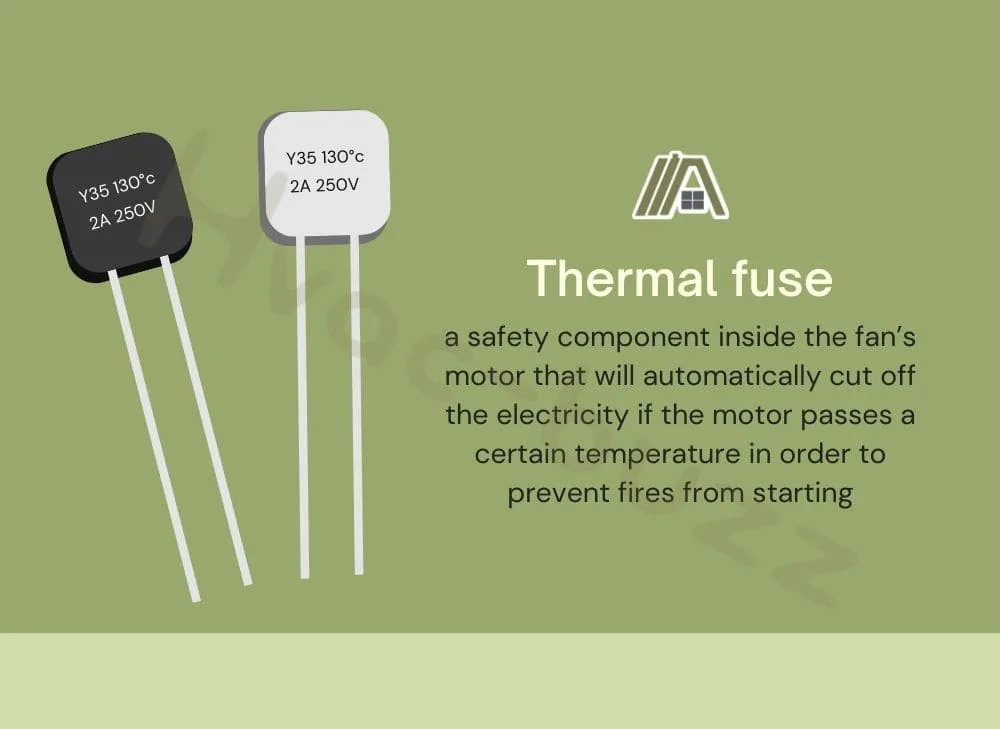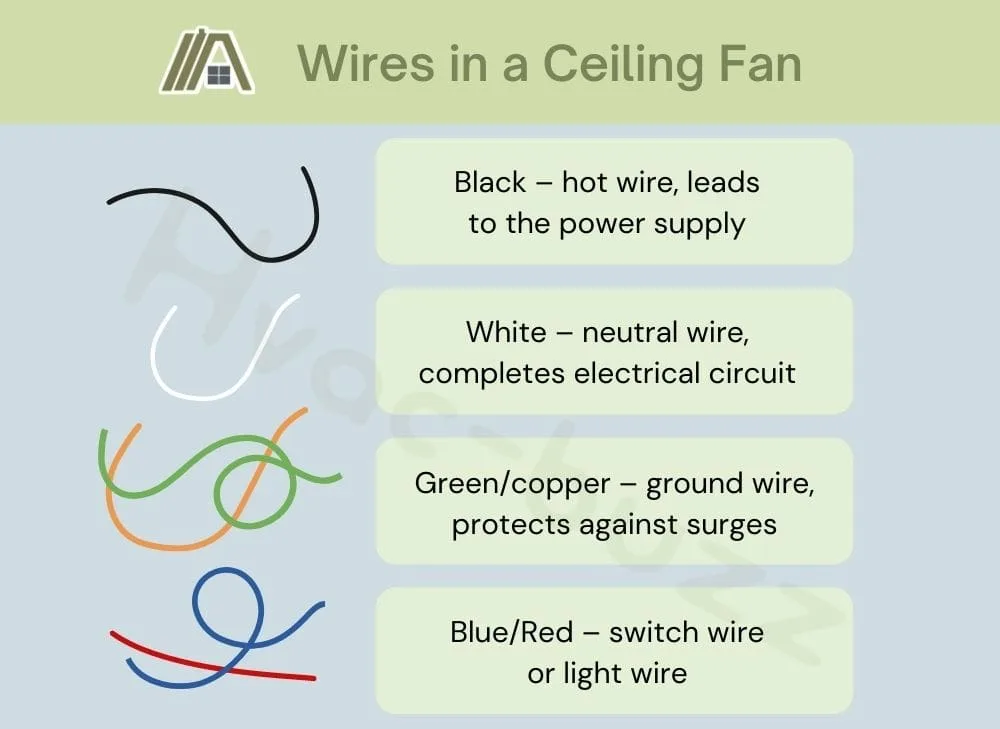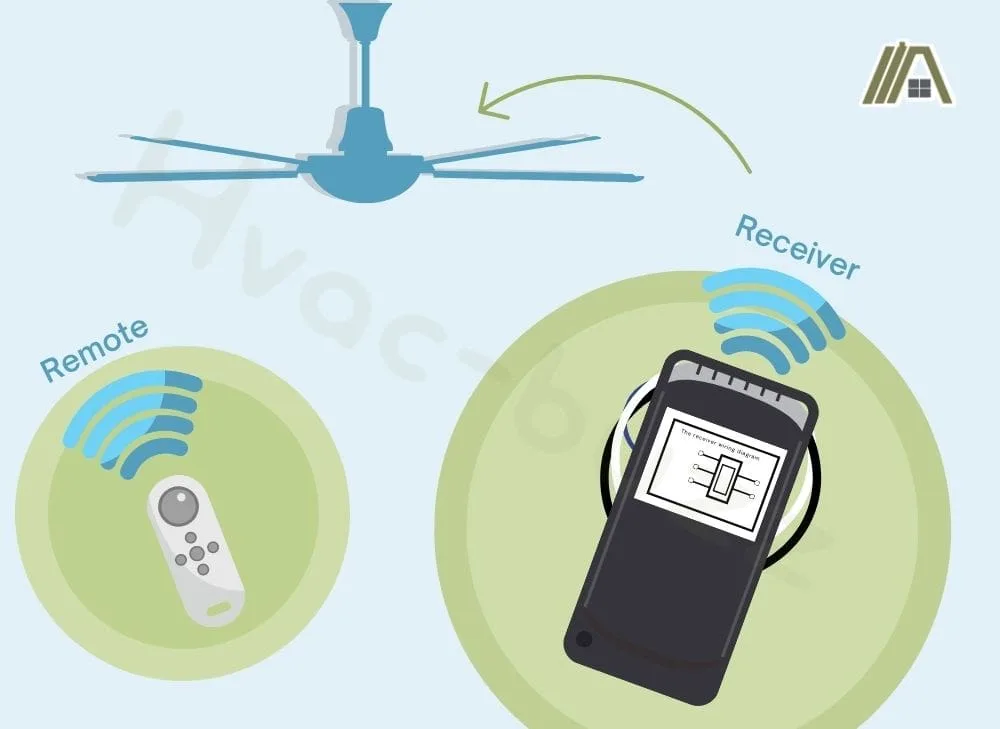As soon as remote-controlled appliances start doing funny things, we can assume it’s something wrong with the frequencies or signal. When manually operated appliances start doing the same thing, there is seemingly no simple explanation. I often blame it on nonexistent gremlins or ghosties until I actually figure out what is happening.
If you were quite excited about the idea of having a haunted home, then I’m going to disappoint you. If, as is more likely to be the case, you just want your fan back in your control, then you’re in the right place. Let’s look at why non-remote-controlled ceiling fans turn on and off by themselves and how we can stop this from happening.

Ceiling fans can turn on and off by themselves if the thermal fuse trips, the wall switch malfunctions, the power supply fluctuates, the wiring is loose or faulty, or if there is a receiver left in the fan.
Reasons Non Remote Fans Turn on/off by Themselves
Thermal Fuse Installed
Your ceiling fan may be overheating and tripping the thermal fuse.
Ceiling fans have electric motors and moving parts. This means that they generate some heat. However, if there is a problem with the fan or how the fan is being used, then this turns from “normal hot” to “too hot”, and the fan can overheat.
Overheating motors can cause several problems, but the main concern is the risk of a fire. To prevent such an occurrence from turning into a significant fire risk, many ceiling fans are equipped with a thermal fuse.
A thermal fuse is a safety component inside the fan’s motor that will automatically cut off the electricity if the motor passes a certain temperature in order to prevent fires from starting. This looks like your ceiling fan turning off by itself.

In some ceiling fans, the fuse will automatically reset after it has been tripped and the fan has cooled down to a certain temperature. The reset switch no longer prevents regular functioning, and your fan will turn back on by itself.
In other fans, once the thermal fuse has been tripped, the motor is no longer usable. The ceiling fan will turn off by itself but will not turn back on—by itself or when you flip the wall switch or pull the chain.
Solution
If you suspect that this could be what is causing your fan to turn off, I recommend checking the temperature of your ceiling fan. You can use an infrared thermometer (amazon link) to gauge whether it is overheating. The temperature of an AC motor ceiling fan should not exceed 150 °F (60 °C).
To see whether the thermal fuse is blown (if your fan turned off but never turned back on again), you will need to test its continuity with a multimeter (amazon link).
If the thermal fuse is blown, you will probably need to figure out what is causing the fan to overheat and address that first.
Malfunctioning Wall Switch
Sometimes we forget to check the wall switch. It is often our first point of contact when turning on the ceiling fan, but often not the place we think could be causing the problem. After all, we didn’t flip the switch, so why did the fan turn off?
There are two main areas to assess, mechanical and electrical.
Mechanical faults could be coming from the physical switch itself. The slider lever or clicker may be loose or worn out. If this happens, then the contact point that allows the electricity to flow to the fan can break, and the fan turns off.
You can assess this by removing the cover plate and checking the condition of the switch component.
If it is an electrical problem:
- Check the electrical service panel to see if the breaker has tripped or the fuse has blown.
- Check the electrical connections of the wall switch for loose wire connections and continuity in the circuit.
Solution
Mechanically if there is something wrong with the wall switch, you can simply replace it. And I say simply because it’s really not a difficult process!
For electrical issues, if the breaker has tripped, you can flip it back on. If, however, it trips again, you will need to investigate further to find out why.
It’s easy to tighten up loose wire connections. You just make sure they are wrapped properly around the screw and that the screw is tight enough. Or you can give the screw caps an extra twist or take them off completely and re-fit them.
If you find any continuity issues, then you can call an electrician to help you.
Power Fluctuations
If the power to your house or to the fan’s circuit is fluctuating, then the fan may not be supplied with sufficient current to keep the fan working the whole time. When the power drops, the fan can stop. When the power return, the fan starts up again.
Power fluctuations should be noticeable in other appliances as well. Your electric kettle might take longer to boil, the microwave can sound weak, and the lights can flicker.
If the power doesn’t fluctuate but experiences a power surge (often happens after a power outage), then your ceiling fan can also turn on or off by itself. Power surges are very damaging to electrical devices and they should be protected against with surge protectors.
Power surges can cause thermal fuses to blow, wattage limiters to break, and circuit board breaker or fuses to trip or blow, respectively.
Solution
If you are experiencing power fluctuations, it’s best to call in an electrician. The problem may be with a little portion of your circuitry, or it may be a more large-scale issue. Either way, finding and solving the problem is something best left to the professionals.
When the power goes out, turn off the ceiling fan at the wall or breaker until the power comes back on. Leave the fan off for several minutes when the power comes back on, so that the voltage can settle to its normal level and then you can turn it on again.
Faulty or Loose Wiring
Just as there can be issues with the wall switch wiring, there could be a problem with the wiring of the fan itself. The trick is to find out which wire and where.
NB: ensure that the electricity to the fan is turned OFF when doing this!
There are typically four wires within a ceiling fan:
- Black – hot wire, leads to the power supply
- White – neutral wire, completes electrical circuit
- Green/copper – ground wire, protects against surges
- Blue/Red – switch wire or light wire
Remove the canopy covering the wires and inspect that they are connected properly and still in good condition.

Solution
Once assessing the state of each wire, you can decide whether the wire needs to be replaced or repaired. Most often it will just involve re-connecting the wires, but sometimes it may involve a more in-depth repair.
The Fan Might Still Have a Receiver
Now, just because you don’t know your ceiling fan to have a remote does not mean that it never had one. There could still be a receiver in the ceiling fan even if there is no remote control.
The fan could have been installed by previous owners and the remote has gone missing. The best way to find out is to remove the fan’s canopy and check in the fan’s mounting box.
Potential Problems
Receivers are the devices in a ceiling fan that connect to the remote control. The remote sends a signal to the fan, and the receiver interprets this signal and directs electricity to turn the fan on/off, increase/decrease the speed, reverse the direction, or turn the lights on/off.

If there is a receiver, it could be faulty or the fan could still be subject to all of the frequency and transmission issues as a fan that is obviously remote-controlled.
Defective Receiver
If the receiver is defective, then the signals it gives to the fan can be random or confused. The receiver may “glitch”, with the result being the fan turning off or on seemingly by itself.
Issues With the Frequency
Ceiling fans utilize a Dual In-line Package (DIP) frequency. DIP means that it is a combined circuit package with two rows of pins. The way a ceiling fan receiver works is by picking up a specific frequency from the remote and translating that into a command for the fan.
The receiver may be picking up frequencies that it shouldn’t be (from other remotes or devices that use signals) and, therefore, changing settings or turning the fan on and off.
Solutions
If you are in a situation where you have a receiver but no remote and would just like to remove the receiver, then you can!
Remove the fan’s canopy with a screwdriver and disconnect the receiver from the wiring. Ensure that the wires are re-connected so that the circuit is continuous within the fan.
If you don’t want to bother with this, then try changing the pattern of the DIP switches. This should prevent whatever was on a matching frequency before from operating the fan accidentally.
You can also buy a compatible remote, pair it to the receiver using the DIP switches and have a remote-controlled fan. I’d still recommend changing the DIP switch pattern.
If you want to have a remote-controlled fan but the receiver is faulty, you can buy a whole kit (amazon link) with a new receiver and a remote.
Sources
https://timberfans.com/loadshedding-and-your-electrical-appliances/

